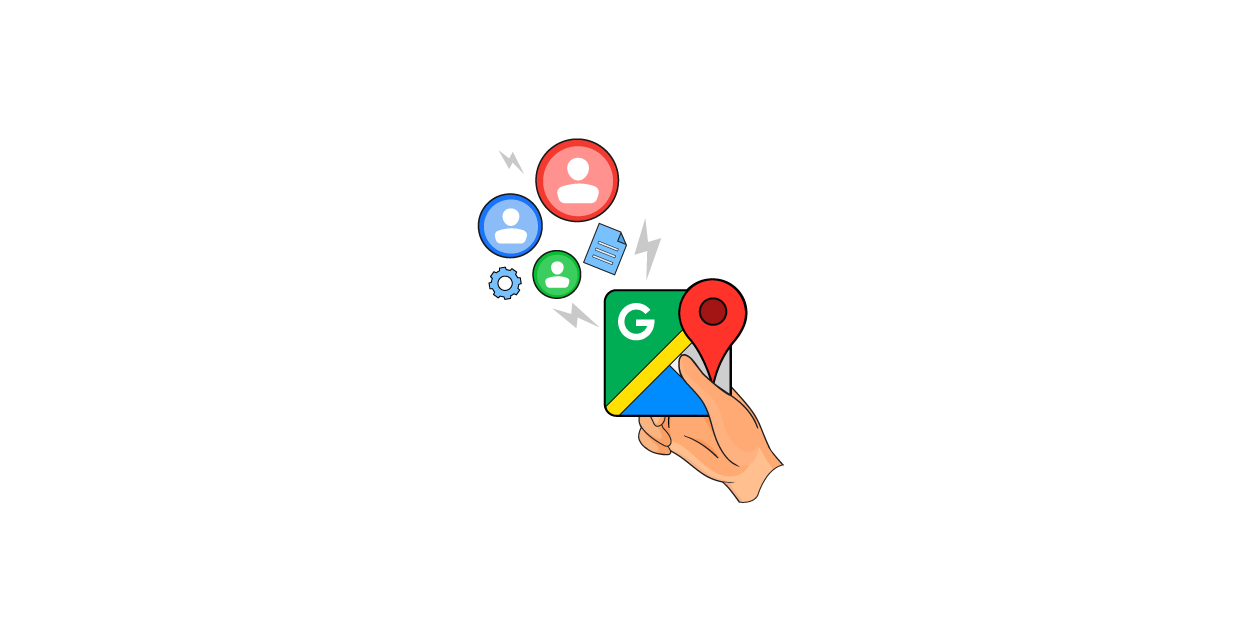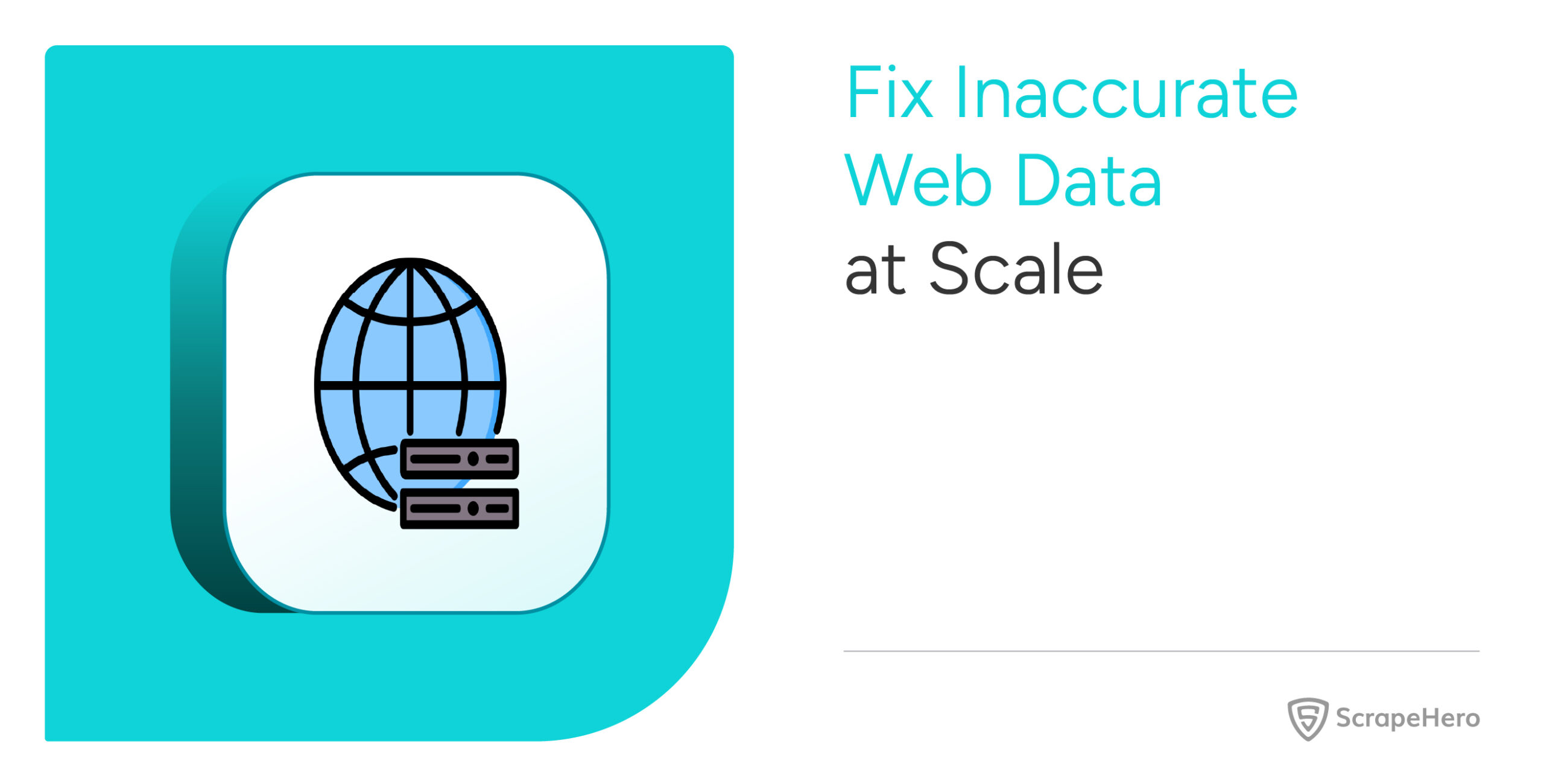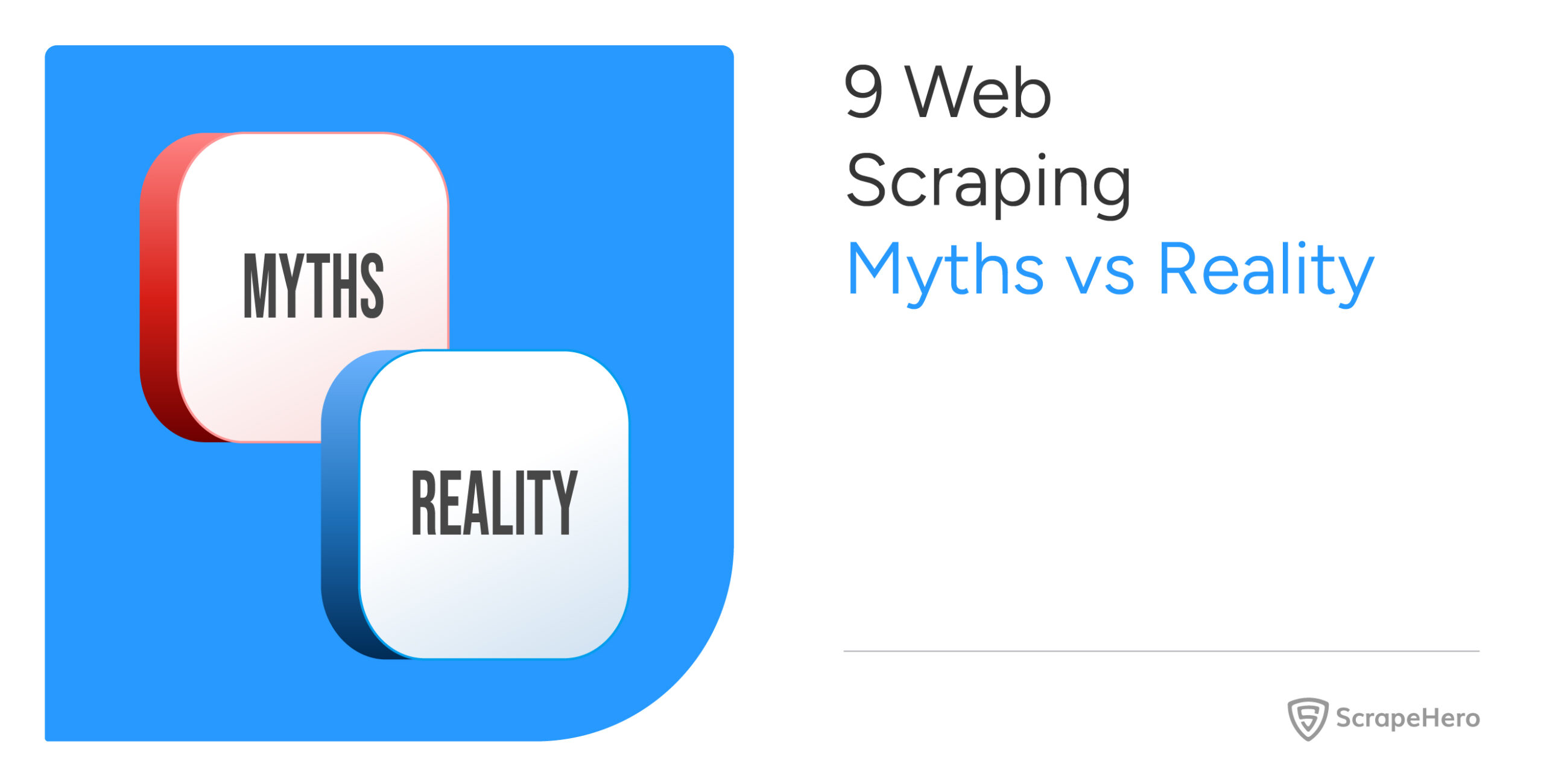Is lead generation an uphill task for you?
Are you still relying on traditional methods like cold calling or e-mail marketing to find your potential customers?
Well, it’s high time you realize that there is an efficient way to optimize your lead generation process.
Though popular as a navigation tool, it is possible to get B2B leads from Google Maps.
Google Maps remains an underutilized resource for identifying high-quality leads. This article explores how to generate B2B leads from Google Maps effectively.
As someone whose primary business is not web scraping, gathering business leads from Google Maps can be challenging. Let ScrapeHero’s web scraping service take it from here.
Don’t want to code? ScrapeHero Cloud is exactly what you need.
With ScrapeHero Cloud, you can download data in just two clicks!
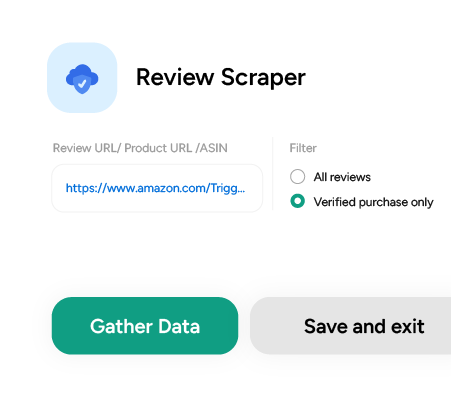
Understanding Google Maps Data Scraping for Lead Generation
Google Maps, as you know, is abundant with details about local businesses, including their reviews, photos, directions, and nearby attractions.
Google Maps lead generation is the process of utilizing this vast database to identify and connect with potential customers, particularly local businesses.
This method allows businesses to compile a comprehensive list of prospects within specific geographic areas.
By scraping data such as business names, addresses, phone numbers, customer reviews, and social media links, companies can effectively target their outreach efforts toward high-potential clients in their locality.
Identifying Your Target Audience to Generate B2B Leads from Google Maps
Defining your ideal customer profile is the first step towards locating your target audience.
This profile outlines the characteristics of the businesses that are most likely to benefit from your products or services.
- Demographic Factors: Consider factors such as industry, company size, location, and revenue.
- Behavioral Insights: Analyze the buying behaviors and preferences of your ideal customers. Understanding what drives their purchasing decisions can help tailor your outreach efforts effectively.
- Pain Points: Identify common challenges faced by your target audience. This understanding allows you to position your offerings as solutions to their specific problems, making your outreach more compelling.
Niche targeting is crucial for maximizing the effectiveness of your lead generation efforts.
Many local businesses, such as restaurants and service providers, often lack visibility on broader platforms like LinkedIn.
Google Maps is the ideal tool for reaching these businesses, which may not be actively seeking out new vendors but could greatly benefit from your offerings.
By concentrating on underserved markets or industries, you can differentiate yourself from competitors who may be targeting broader audiences without specialization.
Industries that could benefit from Google Maps lead generation include construction companies, manufacturing companies, IT service companies, advertising agencies etc.
Steps to Generate B2B Leads from Google Maps
Let us now discuss the steps you need to take to generate B2B leads from Google Maps.
Step 1: Conducting Effective Searches
The first step in generating B2B leads from Google Maps is to conduct targeted searches using specific keywords and categories.
Start by identifying relevant keywords that describe your target businesses. For instance, if you are looking for local restaurants, keywords could include “Italian restaurant,” “vegan cafe,” or “family diner.”
Using these specific terms helps narrow down search results to businesses that align closely with your offerings.
Google Maps allows users to search by business categories, which can further refine your results.
Categories such as “food and drink,” “health services,” or “home improvement” can help filter listings to those most relevant to your business needs.
Once you have established your keywords and categories, utilize Google Maps’ filtering options to obtain the right leads.
Use location filters to specify the area you are targeting. For example, if you are a service provider looking to connect with businesses in San Francisco, set the map view to this city.
This localized approach allows you to focus on businesses that are geographically relevant and more likely to engage with your services.
Google Maps also provides options to filter by business types or attributes (like “open now” or “offers delivery”). This can help you identify businesses that meet specific criteria, making it easier to create a targeted lead list.
Step 2: Scraping Data from Google Maps
Once you have identified relevant businesses through effective searches, the next step is data extraction.
When you use web scraping tools like ScrapeHero and Google Maps scraper, obtaining your data is as easy as copying and pasting.
This scraper doesn’t require coding to extract data, significantly reducing the time and effort required compared to manual data collection.
Step-by-Step Guide for Data Scraping
Here’s how to scrape data from Google Maps using a ScrapeHero Google Maps web scraper:
- Sign in to ScrapeHero Cloud and add the scraper to your account.
- Provide search queries, such as McDonald’s in Boston, MA, to extract all business listings from Google.
- Download the scraped business details in Excel, CSV, or JSON formats. Link your Dropbox to store your data.
- Schedule the crawler weekly to get updated business listings in your Dropbox.
Here’s a sample of data that you can scrape using the ScrapeHero Google Maps Scraper.
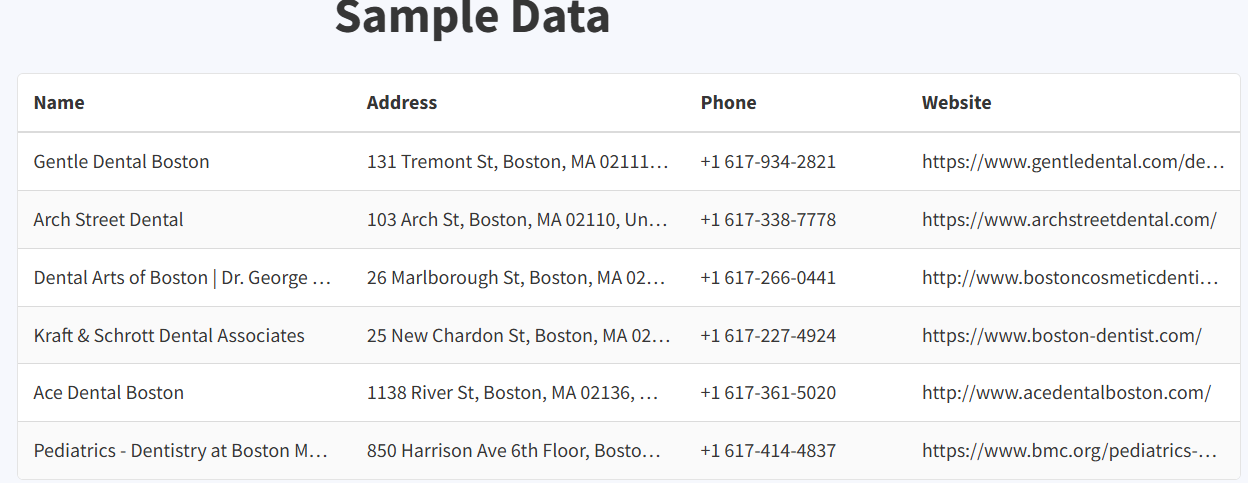
Data scraping with this scraper takes just two clicks. Try the ScrapeHero Google Maps Scraper for free.
Step 3: Enriching Your Data
After scraping data from Google Maps, the next step is to enhance the quality of your leads by verifying and enriching contact information.
Utilize specialized tools like Hunter.io for e-mail verification and enrichment.
These platforms can provide additional insights into businesses, such as buyer intent and funding information. These can be valuable additions when crafting personalized outreach messages.
Ensuring e-mail addresses and phone numbers are valid can significantly boost the chances of your messages being received and acted upon.
Incorrect contact details can lead to wasted resources and missed opportunities.
When you reach out with accurate information, it reflects professionalism and attention to detail, helping establish trust with potential clients right from the first interaction.
Crafting Personalized Outreach Campaigns
Creating personalized outreach campaigns would be the next step in transforming leads into clients.
Creating Customized Messages Based on Collected Data
Tailored messages based on collected data can significantly increase the chances of engagement and conversion. Personalization gives the impression to potential clients that you understand their unique needs and challenges.
Use the insights gathered from Google Maps and other sources to inform your outreach. For instance, if a potential client has received positive reviews about their customer service, mention this in your e-mail.
Acknowledging their strengths shows that you have done your research and are genuinely interested in their business.
Customize your messaging to directly address the specific pain points or goals of the recipient.
This makes your outreach more relevant and compelling.
Best Practices for Effective E-Mail Outreach And Follow-ups
Implementing best practices in personalizing outreach messages can significantly improve engagement rates:
- Always address recipients by name in your e-mails. Personal touches like this make the communication feel more direct and engaging.
- While personalization is important, ensure that your messages are clear and to the point. Busy professionals appreciate straightforward communication that respects their time.
- The subject line is the first thing recipients see, so make it engaging and relevant. A well-crafted subject line can significantly increase open rates.
- Every e-mail should have a clear CTA that guides the recipient on what to do next- whether it’s scheduling a call, signing up for a demo, or visiting your website. Make sure the CTA is easy to understand.
- After sending the initial e-mail, plan follow-up communications to keep the conversation going. A good practice is to wait about 3-5 days before sending a follow-up message.
In this follow-up, reference your previous e-mail and reiterate how your services can benefit them.
Here is a bonus tip!
Incorporate customer reviews and insights into your outreach mail to add credibility and demonstrate that you understand the recipient’s business context.
Make use of review platforms like Google or Yelp to gather the reviews their customers have added.
Common Challenges in Google Maps Data Scraping
Google Maps data scraping is an efficient way for generating leads, but it comes with its own set of challenges.
Understanding these challenges and how to address them is essential to succeed here.
Issues with Data Accuracy and Completeness
One of the primary challenges in data scraping is ensuring that the information collected is both accurate and complete.
Inaccurate or incomplete data can mean missed opportunities.
- Google Maps Data Limitations: Google Maps relies on user-generated content, which can sometimes result in inaccuracies.
For instance, businesses may not update their information regularly, and their contact details or locations could be outdated.
You might have to regularly verify the accuracy of the data you collect.
- Data Cleaning: After scraping, the raw data often requires cleaning to ensure its quality. This includes removing duplicates, correcting formatting errors, and filling in missing information.
- Error Handling: Implementing error handling mechanisms is essential to address potential issues during scraping.
Regularly monitor your scraping scripts for errors and adjust them as needed to ensure continuous functionality.
Choosing Between Manual vs. Automated Lead Scraping Processes
To generate B2B leads from Google Maps, businesses have two scraping options to choose from, manual and automated processes. Each approach has its own set of advantages and challenges.
- Manual Scraping: This method involves manually collecting data from Google Maps.
While it may be suitable for small-scale projects or one-time data collection efforts, manual processes are often time-consuming and prone to human error.
They lack scalability and can become inefficient as the volume of leads increases.
- Automated Scraping: Automated tools streamline the scraping process, allowing for rapid data collection across multiple listings.
Tools like ScrapeHero Cloud Google Maps Scraper can be used for Google Maps lead generation as easy as copy and paste.
While the ScrapeHero Cloud scraper is an easy-to-use Google Maps scraper, other tools used for automated scraping require careful setup and ongoing maintenance. They might also have a limit on how much data can be scraped and customization.
But with a web scraping service, there will be flexibility with the amount of data you can scrape, customization etc.
Compliance with Data Privacy Regulations
When you rely on web scraping Google Maps for lead generation, compliance with data privacy regulations is important.
- Understand Legal Frameworks: Familiarize yourself with relevant laws such as the General Data Protection Regulation (GDPR) in Europe or the California Consumer Privacy Act (CCPA) in the United States.
- Anonymize Data When Necessary: If you are collecting personal information that could identify individuals, consider anonymizing this data to protect their privacy.
- Implement Secure Data Handling Practices: Ensure that any sensitive information collected during scraping is stored securely and accessed only by authorized personnel.
Properly managing credentials and using secure storage solutions are critical components of maintaining compliance.
Why Use Google Maps for B2B Lead Generation
Google Maps is abundant with data that gives you access to detailed information about local businesses, including contact details, customer reviews, and operational insights.
This data allows companies to:
- Target Local Markets: Businesses can focus their efforts on specific geographic areas, ensuring that their outreach is relevant and timely.
- Enhance Lead Quality: By leveraging customer reviews and business profiles, companies can tailor their messaging to address the specific needs and pain points of potential clients.
- Streamline Data Collection: Automated scraping tools can efficiently gather large volumes of data, saving time and reducing manual errors.
To further streamline your lead generation efforts, consider exploring a reliable web scraping service like ScrapeHero.
Generate B2B Leads from Google Maps With ScrapeHero
ScrapeHero is a fully managed enterprise-grade web scraping service. With over a decade of experience in the field, ScrapeHero solutions can cater to your specific data needs.
The benefits of using ScrapeHero for lead generation include:
- Expertise: We have over a decade of experience and our team consists of people who are experts in web scraping.
- Scalability: Whether you’re starting small or looking to scale up your operations, our infrastructure is designed to handle increasing amounts of data efficiently.
- Customization: Our service lets you to specify exactly what data you need from Google Maps or any other source, ensuring that you receive relevant information without unnecessary clutter.
Connect with ScrapeHero today and let us explore the ways in which we can help your business.
Bonus tip: You can talk to our experts for free with no obligation to sign with us.
FAQs
Google Maps lead generation involves using the platform’s business listings to identify potential B2B clients based on geographic location and industry specifics.
To generate leads through Google Maps, start by conducting targeted searches using specific keywords related to your business.
Utilize tools like ScrapeHero Cloud Google Maps Scraper or other scraping solutions to extract data such as business names, addresses, and contact information from the listings you find.
Once you have scraped the data using a tool like ScrapeHero Cloud Google Maps Scraper, you can easily export the leads into various formats such as CSV or Excel.
This feature allows for easy integration with your CRM or e-mail marketing platforms.

